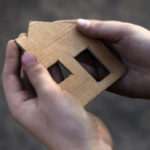
Playing tag. A scavenger hunt. Bingo. Team competition. A trivia quiz. These are all childhood games that evoke a sense of camaraderie, cooperation, and entertainment, with a bit of friendly rivalry thrown in. And all of them, in a more technologically mature form, are being incorporated into meetings and conventions to help boost everything from social networking to content engagement.
Gamification — the idea of bringing games or gaming interaction into nontraditional contexts — is being incorporated into the event space at a rapid pace. In some ways, it’s the perfect petri dish for games to blossom: a short, intense time frame with a distinct ending, and a large gathering of like-minded people. “Games engage folks through interactivity, not just watching something but being apart of it,” said Andrew Phelps, director of the Rochester Institute of Technology Center for Media, Arts Games, Interactions & Creativity, or MAGIC Center. “Games are getting people to reflect on their behaviors and think differently about an activity.”
But they’re not just about fun. From a planning perspective, it’s important to develop or incorporate a game into a meeting by thinking about the end goal. Gaming can subtly encourage attendees to visit and spend more time with exhibitors, help them retain information presented by a keynote speaker, improve networking, boost the buzz surrounding the program, and energize its atmosphere. If you don’t incorporate gaming in a thoughtful way, these diversions actually can detract from the event, according to Gabe Zichermann, CEO of Gamification Co., a source for news and information on gamification, and chair of GSummit, an annual conference focused on gamification.
“Avoid cheesy games, and think about how a game is connected to your event,” said Zichermann, author of the book The Gamification Revolution: How Leaders Leverage Game Mechanics to Crush the Competition. “The biggest application for gamification in live events is to manage the overwhelming information flowing at attendees from devices and the live world, and to help organizers get value out of that.”
Social networking to scavenger hunts
All meeting organizers have to contend with the fact that attendees are likely to have at least one device — smartphone, tablet, laptop — that can be a distraction from the educational program or the exhibit hall. You might be tempted to resist the technology (Zichermann says he still runs into planners who deliberately don’t invest in strong Internet connections for that reason), but game creators say that instead you should embrace it through gaming.
An event-gaming platform called livecube, for example, allows you to stage contests that award points for the most tweets, retweets, photos, and interaction through Twitter or a private social-networking community created specifically for the event. Attendees are ranked on a leader board displayed online and at the meeting — a feature that CEO Aaron Price, who co-founded livecube with Zichermann, calls “highly motivational.” Participants with the most points might earn prizes ranging from a bottle of wine to services from exhibitors. The livecube platform can display tweets and content by session and allow live questions and answers from the audience, and saves a history of those interactions. All of that material can be displayed on screens at the event.

One of the most important features is that the system automatically includes correct hashtags for the convention, panel discussion, or meeting, so the event gets its due on Twitter. Price organizes both the monthly NJ Tech Meetup for entrepreneurs and innovators, and the annual NJ Spark Summit, which describes itself as “a daylong (un)conference about startups and entrepreneurship.” At the NJ Spark Summit 2014 at the Stevens Institute of Technology in Hoboken, N.J., this past February, Price used livecube for the first time. “There was a huge difference,” he said. “It used to be that I’d get a few dozen tweets and some misspelled hashtags.” This time the summit generated 596 tweets and 345 retweets, with a total reach of 579,434 Twitter followers. Zichermann had a similar experience with livecube at GSummit 2013 in San Francisco, which — with all of 600 attendees — became one of the top trending topics on Twitter. “The kind of traffic it takes to make that a top trending topic requires real heft,” Zichermann said.
Kate Childs, a publicity manager at Random House, also saw high impact using livecube at her company’s daylong open house in New York City last May, where 250 readers interacted with authors like food writer Ruth Reichl and TV personality Jenny McCarthy. The event garnered about 1,450 total tweets, 629 of them posted through livecube. Screens set up throughout the venue featured top tweets, photos, and comments. Attendees could also get information on all the day’s speakers, including their Twitter handles, and earn prizes. And livecube’s pre-set hashtags were a plus. “There was automatically brand recognition,” Childs said, “and it simplified the process.”
That said, Childs noted that it’s important to strike a balance when thinking about events and gaming. “There’s a debate about how much you want people on their phones,” she said, “since you want people actually engaged in what’ s happening. But this added a layer of fun to that engagement.”
There’s a debate about how much you want people on their phones.
Games can also boost the experience for exhibitors. Kimberly Pargin, the coordinator of associate member relations for the Texas Bankers Association (TBA), used the SCANVenger Hunt platform at TBA’s thousand-attendee 2013 Annual Convention & Exposition in San Antonio last May. Attendees visited exhibitors and used a QR-reader app to scan a code at each booth. Once the code was scanned, they were asked a question related to the banking industry to earn points toward prizes and a $2,500 drawing. SCANVenger Hunt provided a link to a website that showed participants’ rankings, which were also displayed on a leader board at the show.
The platform allowed Pargin to update a game TBA had used in the past that asked attendees to fill a bingo-style card with stamps from exhibitors; members’ spouses often ended up collecting the stamps, Pargin said, which didn’t help connect members to exhibitors. With SCANVenger Hunt, it was more likely that members would visit the booths themselves, because they had to use their own smart-phone and the questions were related to the industry. After the meeting, exhibitors could access information on which members scanned a code at their booth. Only about 30 percent of attendees participated in the game, but Pargin said she plans to include it in future programs, and thinks usage will rise.
Another game that tries to promote interaction between attendees and exhibitors is TripBuilder Media Inc.’s Crack the Code. Using a mobile app, attendees visit exhibitors’ displays to retrieve a code that must be entered to earn various points toward prizes — creating an opportunity for dialogue between an exhibitor and an attendee. “This gives them a reason to engage,” said Steven Tanzer, president of TripBuilder, “and that’ s a big benefit.”
TripBuilder has also created custom games for exhibitors. During the Insurance Accounting & Systems Association’s (IASA) 2013 Annual Educational Conference and Business Show, which brought 2,400 attendees and 200 exhibitors to Washington, D.C., last June, one sponsor had TripBuilder create a “Where’s Bill?” game, playing off the Where’s Waldo? children’s books. Within the conference app, attendees clicked on the game, which automatically dropped a pin in a map of the conference venue to show where Bill, the company’s president, was at any given time. If attendees located him, he’d give out prizes, but the game also allowed the company to connect with potential customers, according to Margaret McKeon, CMP, IASA’s vice president of conference and events.
IASA asks attendees to download its conference app every year, and with the inclusion of Where’s Bill?, downloads at the 2013 meeting went up about 10 percent. McKeon plans to use Crack the Code at this year’s conference in Indianapolis, and wants to incorporate the Where’s Waldo? concept into a future program, maybe in the form of a treasure hunt. “It has great potential for moving traffic around the hall,” McKeon said.
MISSIONS, POINTS, AND PRIZES
Beyond tailoring a game to a specific objective, there are strategies that can boost the effect of gaming at a meeting, according to Gamification Co.’s Zichermann — including the prizes that you offer. “If it’s just another USB key chain, a pen, or a bag, people of high value are not that into it,” he said. “Most of the rewards we offer are non-tangible. It’s about mastering things, and looking and feeling like you’re succeeding in front of your peers.” Popular prizes have included unlocking a secret session with a keynote speaker, for example, or front-row seating at an in-demand event, or getting a few minutes to present an idea or product before a breakout panel.
Other best practices? Don’t make the game too complicated, said Samuel J. Smith, managing director of Interactive Meeting Technology, which creates games that help attendees connect with each other. “People don’t want it if you have to go to 16 places and do these 20 things,” Smith said. “Don’t create barriers to participation.”
One of the games that Interactive Meeting Technology has created to improve networking and socialization at events is a challenge bar. The idea is simple: Attendees walk up to a bar stocked with a series of iPads and play a simple trivia game, typically tied to the conference topic. A huge question bank means attendees are unlikely to have the same question as their neighbor; participants standing next to each other at the challenge bar often poll the crowd or turn to each other for help. A leader board displays scores, and after three incorrect answers, a buzzer sounds and the next contestant steps up. “Even though they’re competing, they’re also sharing and interacting, communicating and collaborating,” Smith said. “We reinforce the content from the conference.”
Some game creators, including Smith and livecube’s Price, think it’s important not to require conference attendees to download an app. For that reason, livecube is accessed through a web URL. Abig, prominent leader board is also important, Smith said. People like taking photos of themselves standing in front of their name, or being able to tweet photos to their friends. That recognition can sometimes be just as much of an incentive as a prize.
Some game creators think it’s important not to require conference attendees to download an app.
But games can do more than educate and entertain. They can work as icebreakers, get people’s blood flowing after a long program of sitting, and even lighten the atmosphere. The Go Game, a San Francisco-based company, designs and stages team-building games for meetings of all sizes, with programs running the gamut from silly challenges (take a video of yourself dancing behind an unsuspecting attendee) to demonstrating industry knowledge. Often the Go Game will create team challenges with missions like using code words to find secret agents or asking trivia questions to fellow attendees. “It’s a good way to get people to network inadvertently,” said Jenny Gottstein, a game producer for the Go Game.
For example, at the 2011 SAP TechEd Las Vegas conference, the Go Game created Knowledge Quest, with challenges that earned participants points toward prizes or a donation from SAP, which specializes in enterprise software, to an education-based charity. Learning challenges focused on answering questions posted by speakers. Visiting and interacting with exhibitors garnered points, as did scavenger hunts and group challenges. “Adding a simple gamification element to a conference can keep people’s eyes from glazing over, change the dynamic, or help people walking through a space make connections,” Gottstein said. But to make it all work, “you have to create an incredible game along with a great incentive prize.”

Those incentives can influence people’s behaviors, according to Chandar Pattabhiram, the vice president of marketing for Badgeville, a gamification platform. “We make people do more things more often,” he said. For example, Badgeville’s behavior platform incorporates gaming to encourage brand loyalty, engage with a wider range of convention aspects, and improve interaction among convention goers and between attendees and exhibitors. At the Oracle OpenWorld 2013 conference in Las Vegas last June, Badgeville created a variety of missions for attendees to earn points toward prizes — including VIP access at events and America’s Cup paraphernalia, Pattabhiram said.
But Badgeville also aims to change the behavior of business travelers who might be going to conferences across the country. American Express is using the platform for its GoTime gamification efforts, which reward business travelers for making decisions that fall within their company’s travel policies. Travelers accept policy-related missions like booking tickets through a preferred supplier, purchasing in advance, or pairing airplane tickets with hotel reservations. If travelers are successful in completing a mission, they’re rewarded with points displayed on an online leader board, badges, and prizes. Several companies enrolled in American Express’s Modern Loyalty program are currently using the system through a pilot program, according to American Express. Preliminary results showed that 35 days after the pilot launched, the number of bookings with company-preferred airlines increased by 4 percent, employees were 6 percent more likely to book hotels and flights together, and they were booking travel further in advance.
In a written response to questions, American Express said traditional methods of encouraging employees to adhere to company travel policies are “becoming less effective as workplace demographics shift and new technologies emerge.” In addition, the company said, younger workers have different attitudes toward technology and respond well to gamification.
Sometimes gamification at conferences can go beyond prizes. At the CIO Executive Council’s CIO Leadership Event in Boca Raton last May, the program’s 600 attendees played an idea-generation game, said Rick Pastore, the council’s vice president of strategy. Each keynote speaker posed a challenge question to the audience, who worked in teams to brainstorm ideas, pick the best ones, react to them, present them, and choose a winner. There were three live idea-generating rounds, as well an opportunity for online participation through a mobile app that allowed attendees to vote for their favorite concepts. Each team played for a nonprofit organization, some related to education, which would get a donation from the CIO Executive Council if they won. “It got to be competitive,” said Pastore, who had seen Zichermann put the idea-generation game into action at an earlier conference. “We got a good group of people to cheer for their teams, it was fun, but at the same time, the real benefit was the great ideas they were creating.”
But most interesting, Pastore said, was how the game seemed to inspire continuing benefits. People began to think about how it could be used to generate ideas in their own organizations — and the council recorded all the ideas from the leadership conference in case people wanted to develop them on their own time later. “IT leaders are generally introverts, so it’s harder for them to spontaneously form these bonds,” Pastore said. “When they’re on a team trying to win something and it gets them thinking creatively, they’re more likely to form a lasting peer connection.”
Test Time



